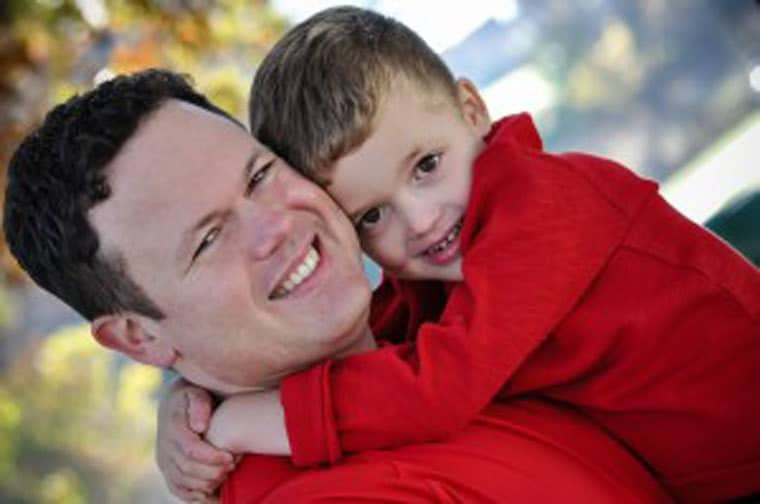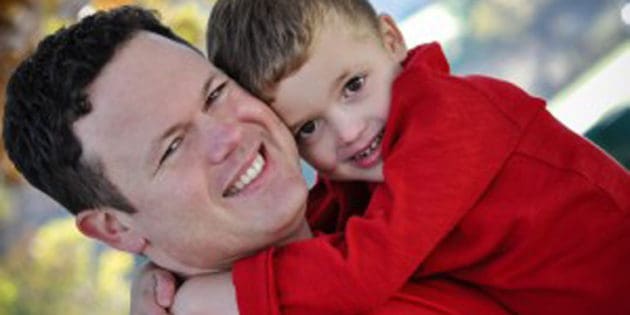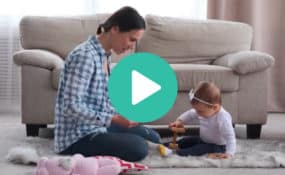Our son was born after a very quick labor and a fairly uneventful pregnancy. He was our second child and within seconds of his entry into the world, we knew that raising him would be different experience than that of his older sister
When his older sister was born she made a couple of small cries, then quietly let the nurses do their jobs. However, our son began crying in a very loud voice within seconds of delivery and had no intention of letting the nurses have an easy job of doing anything!
To this day, 4 years later, he has no idea how to do anything quietly. He is all boy, full of energy, life, and a strong set of vocal cords.
Within a month after coming home from the hospital we began to notice round crusty red patches on his cheeks as well as under his knee and elbows. We assumed that it was baby acne that was still lingering and would eventually clear up. However, it never did. It simply got worse. It became more prevalent on the tops of his feet and hands. Eventually even his ears were affected, becoming cracked and bloody.

His doctor said it was a rash due to the dry air and that it would eventually clear up. Unfortunately, it only got worse. Cade rarely slept through the night. We watched him toss and turn, trying to get comfortable. In the morning we would find red spots of blood on his pajamas. He had scratched so much that he had broken the skin.
Supportive and concerned friends and family offered tips and advice. We tried all of them. We gave him baths in oatmeal, salt water, baby oil and every lotion at the store that we could buy. One very nice man at Sea World told us to dip him in the ocean. My family and I were at South Padre Island a couple of weeks later, dipping Cade in the ocean.
Our son would often get better, but within a matter of days, the red patches and broken skin would return. Finally, after turning two, we took him to a dermatologist. Our first appointment with Dr. Mark Tussa at the Scott and White Northside Dermatology clinic in Temple, provided us with the relief that Sandra and I, and especially Cade, were looking for. He was diagnosed with eczema.
What Is Eczema?
The term is typically applied broadly to a range of persistent skin conditions such as redness, skin swelling, itching, dryness, crusting, flaking, blistering, cracking, oozing, or bleeding. As there is no permanent cure for eczema, the goal is to decrease the skin eruption and relieve the itching. There are a number of medications for eczema.
If your child is suffering from eczema, it is best to see a dermatologist. A doctor will order the medications best for your child. Most often your doctor will prescribe topical medicines. Cortisone-derived ointments or creams are very important in decreasing itching and inflammation. Your doctor will suggest a cortisone treatment that is most appropriate for the severity and location of your child’s rash. When the area is clear, it is best to discontinue the use of the cortisone preparation. Vigorous use of moisturizers will help prevent new areas of inflammation occurring. Systemic antibiotics often enable infected dermatitis to be controlled as well as secondary infections.
Of course, if itching or a new rash begins, you may have to use the cortisone preparation again. Antihistamines also help control itching. They introduce some degree of drowsiness and help children sleep better at night. Systemic antibiotics often enable infected dermatitis to be controlled as well as secondary infection.
My son’s doctor prescribed the regular course of steroid cream. However, the best advice he gave, allowing us to reduce the amount of cream used… put an eighth of a cup of bleach in his bath water. Works wonders!
- Our Son’s Frustrating Fight With Eczema - August 23, 2016
- Our Son’s Frustrating Fight With Eczema - August 23, 2016
- Our Son’s Frustrating Fight With Eczema - August 23, 2016







